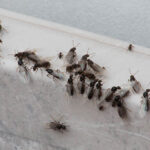As a new duckling owner, you might be marveling at the adorable sight of your little ones paddling in water. Perhaps you’ve even captured those charming photos of ducklings splashing in a sink. It’s natural to wonder about their other abilities too, especially, when will these fluffy creatures take to the skies? The question, “Can Ducklings Fly?” is a common one for those new to raising these waterfowl.
 my farmhouse sink
my farmhouse sink
Like many, you might be eager to witness your ducklings spread their wings and fly. It’s fascinating to observe their development from tiny, clumsy hatchlings to independent waterfowl. However, unlike some birds that take flight shortly after birth, ducklings have a slightly different timeline.
Ducklings and Swimming: Instinct Before Flight
Let’s first address their aquatic prowess. Ducklings are indeed natural swimmers. From a very young age, they possess the instinct to paddle and navigate in water. This is why introducing them to water, under careful supervision, can be a joyful experience for both you and your ducklings.
However, it’s crucial to remember that while they instinctively swim, young ducklings can tire easily and are susceptible to chilling. Their early swims should always be brief and in a safe, controlled environment.
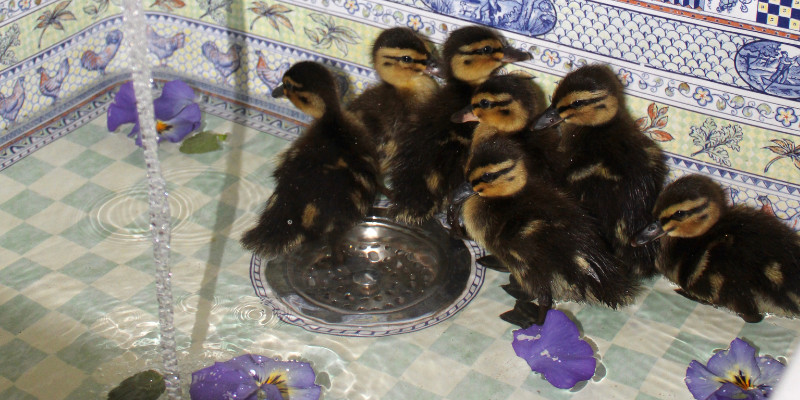 Introducing Ducklings to Water in a Farmhouse Sink
Introducing Ducklings to Water in a Farmhouse Sink
Water Safety for Young Ducklings
- Shallow Water: In their brooder, water should be no more than 1/4 inch deep to prevent accidental drowning. Even a small amount of water can be risky for very young ducklings.
- Age Matters: Wait until ducklings are at least one week old before introducing them to swimming. Even then, their first swim should be short and supervised.
- Constant Supervision: Always keep a close watch during their swim time. Ducklings can fatigue quickly in water.
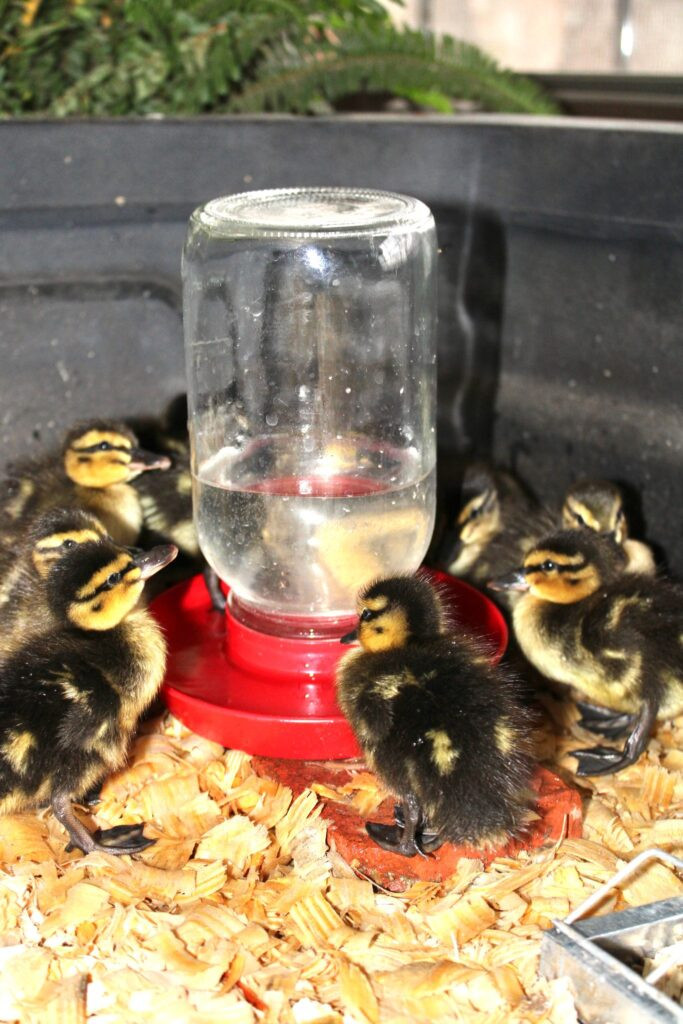 Mallard ducklings drinking from their waterer
Mallard ducklings drinking from their waterer
Using waterers designed for chicks and ducklings, which are shallower, can also minimize drowning risks in their brooder. Alternatively, nipple waterers can eliminate open water sources altogether in the brooder environment.
Keeping Ducklings Warm After Swimming
Maintaining a warm environment is just as important as preventing drowning. After a swim, ducklings need to be thoroughly dried to avoid chilling. Until they develop their waterproofing around four weeks old, they rely on external warmth and drying to stay healthy.
- Warm Room and Water: Ensure the room is comfortably warm and the water is around 75 degrees Fahrenheit before their swim.
- Brief Swim Sessions: Limit swimming time as water cools down quickly.
- Towel Drying: Gently towel dry your ducklings immediately after their swim to prevent chilling.
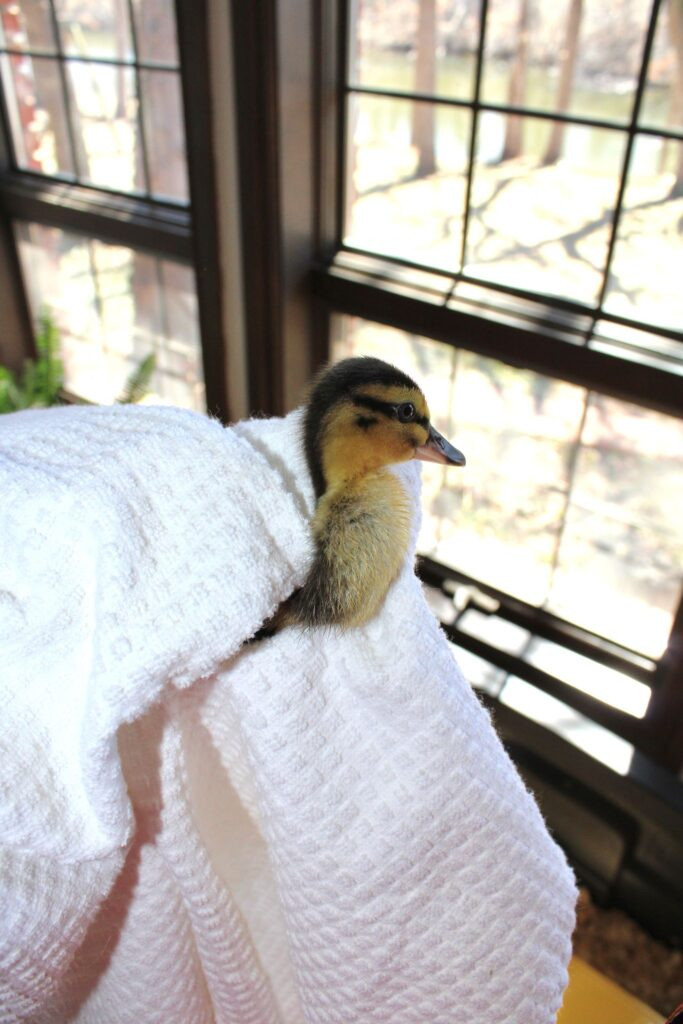 Towel drying duckling after swimming
Towel drying duckling after swimming
From Swimming to Soaring: When Ducklings Learn to Fly
While ducklings are adept swimmers from a young age, flight development takes a bit longer. They need time to grow their flight feathers and build the necessary muscle strength.
Ducklings typically start to fly around 8 to 10 weeks old. This is when they become fully feathered and their wing muscles are developed enough for flight. However, this timeframe can slightly vary depending on the breed and individual duckling development.
Before this stage, you’ll notice them practicing – flapping their wings and perhaps making small hops. This is all part of the process of preparing for flight.
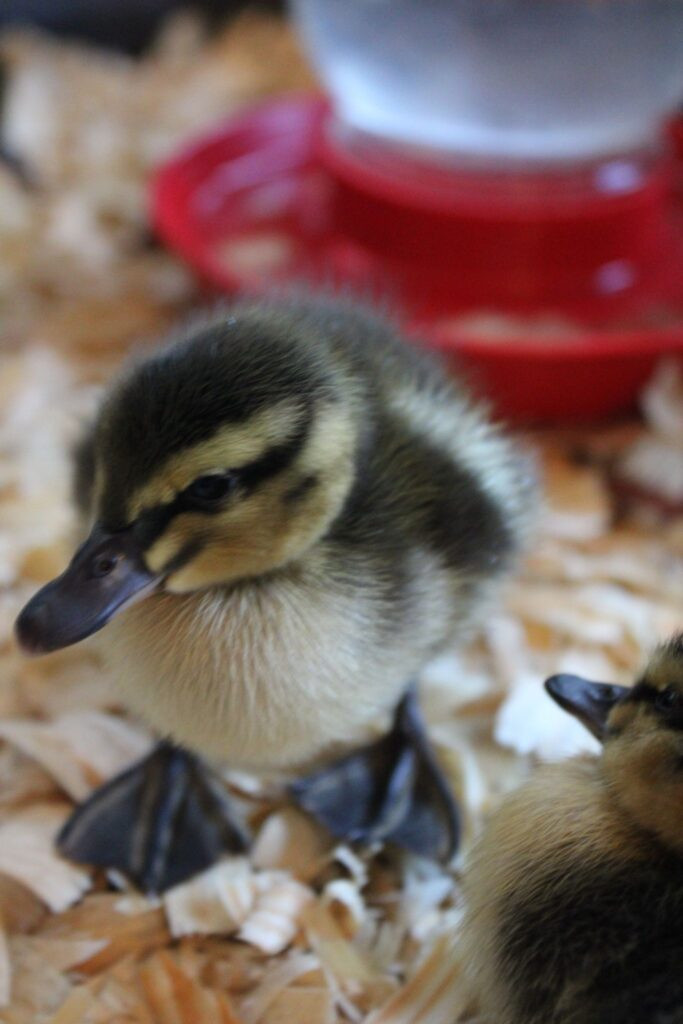 mallard duckling
mallard duckling
Duckling Development: A Gradual Process
Raising ducklings is an exciting journey, watching them grow from fluffy babies to capable waterfowl. Just like their swimming abilities develop early, their flight capabilities emerge as they mature.
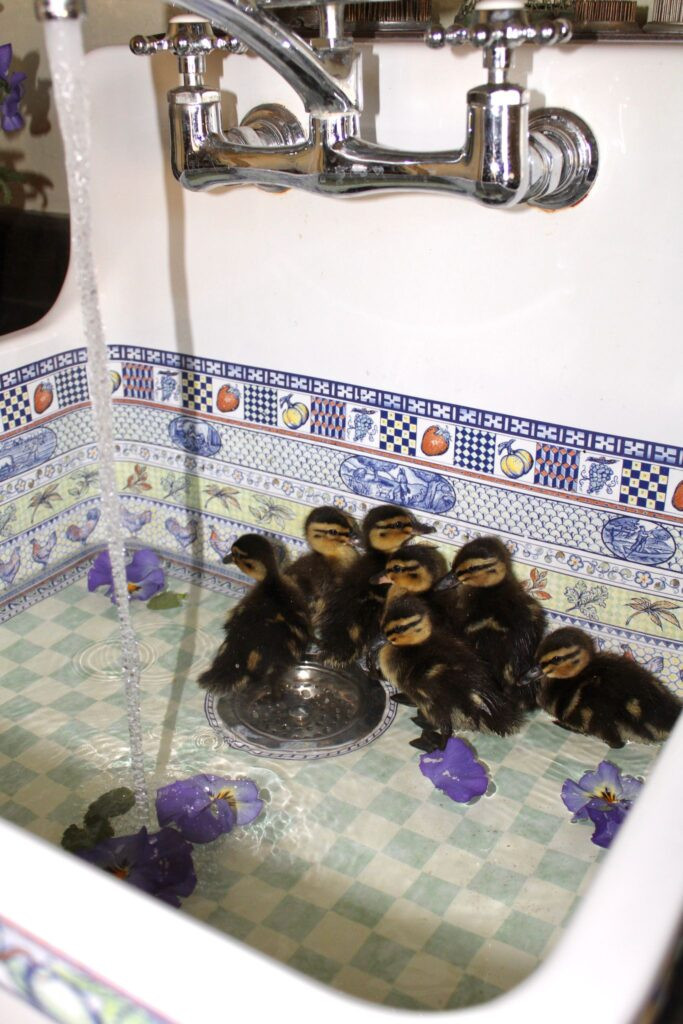 Introducing our ducklings to water
Introducing our ducklings to water
Initially, their focus is on basic survival – eating, staying warm, and navigating their environment, including water. As they grow stronger and their feathers develop, flight becomes the next natural milestone.
Patience and Observation
So, while your young ducklings might not be soaring through the air just yet, rest assured that flight is in their future. Enjoy the process of watching them grow, develop, and eventually take to the skies. Their journey from clumsy ducklings to graceful fliers is a testament to the wonders of nature.
Observing ducklings in water provides endless entertainment and a glimpse into their natural behaviors as they grow and develop.
Continue to provide them with a safe and nurturing environment, and soon enough, you’ll witness the day your ducklings spread their wings and fly. Until then, enjoy their adorable antics and splashing fun!
